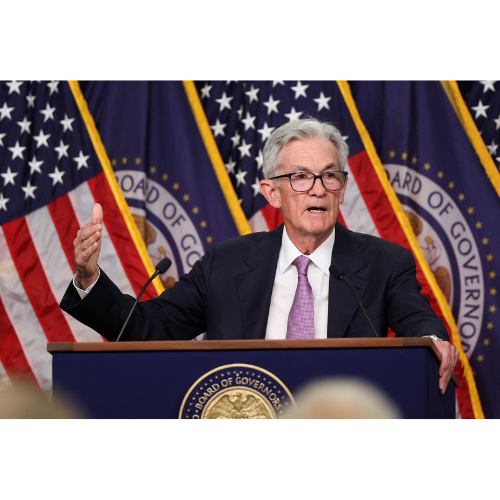The Fed’s Upcoming Rate Cut: A Turning Point or a Warning Sign for the Global Economy?
The Federal Reserve’s primary mandate is to maintain price stability and maximum employment. Over the past year, inflation in the U.S. has cooled significantly, falling closer to the Fed’s 2% target. However, recent indicators suggest that economic growth is slowing, with consumer spending softening, manufacturing output declining, and job creation losing momentum.
In response, the Fed is expected to lower its benchmark interest rate from 5.25% to 5.00%, marking its first cut since the tightening cycle began in 2022. The goal: to stimulate borrowing, investment, and consumption in hopes of reigniting economic momentum.
But this move is not without controversy.
A Critical Juncture: Stimulus or Signal of Weakness?
While rate cuts are traditionally seen as pro-growth, the timing of this decision raises concerns. Cutting rates when inflation is under control but growth is faltering suggests that the Fed may be reacting to early signs of recession. In fact, some analysts argue that this is less a proactive stimulus and more a defensive maneuver to cushion a downturn that’s already underway.
Key warning signs include:
- Declining retail sales in August, particularly in durable goods.
- Rising corporate layoffs, especially in tech and finance.
- Flattening wage growth, which could dampen consumer confidence.
- Weak global demand, with China reporting slower industrial output and Europe facing stagnation.
If these trends persist, the Fed’s rate cut may be the first of several, signaling a broader shift from inflation-fighting to recession-avoidance.
Global Ripple Effects: Emerging Markets and Currency Volatility
The Fed’s decisions don’t just affect the U.S.—they reverberate across the globe. For emerging markets, including countries like Argentina, Brazil, and India, a lower U.S. interest rate can be a double-edged sword.
Potential benefits:
- Weaker dollar: A rate cut typically softens the U.S. dollar, making it easier for emerging economies to service dollar-denominated debt.
- Capital inflows: Lower U.S. yields may push investors to seek higher returns in developing markets.
Risks:
- Currency volatility: Sudden shifts in capital flows can destabilize local currencies.
- Inflationary pressure: Easier money globally can reignite inflation in fragile economies.
- Asset bubbles: Cheap credit can fuel speculative investments, especially in real estate and equities.
For Argentina, which is navigating its own economic reforms under President Javier Milei, the Fed’s move could offer short-term relief in terms of debt servicing and foreign investment—but it also demands careful monetary coordination to avoid overheating or destabilization.

Market Reactions: Stocks, Bonds, and Investor Sentiment
Financial markets have already begun pricing in the rate cut. The S&P 500 has rallied modestly, while Treasury yields have dipped in anticipation of looser monetary conditions. However, the enthusiasm is tempered by uncertainty.
Investor sentiment is split:
- Optimists see the cut as a green light for risk-taking, expecting corporate earnings to rebound.
- Skeptics worry that the Fed is “behind the curve,” reacting too late to structural weaknesses in the economy.
Bond markets, in particular, are flashing caution. The yield curve remains inverted, a classic recession signal, and credit spreads are widening—suggesting that investors are demanding higher premiums for risk.
Is the Fed Losing Its Grip?
The Fed’s credibility hinges on its ability to balance inflation and growth without triggering instability. But recent years have tested that balance. After aggressively raising rates to combat post-pandemic inflation, the central bank now faces the challenge of pivoting without panicking.
Critics argue that the Fed’s policy cycle has become too reactive, driven more by market expectations than macro fundamentals. Others point to the lag effect of monetary policy—changes in interest rates take months to influence the real economy, making timely intervention difficult.
Moreover, the Fed’s tools are blunt. Rate cuts can’t fix supply chain disruptions, geopolitical tensions, or demographic shifts—all of which are shaping the modern economy in complex ways.
The upcoming rate cut may be just the beginning. If economic data continues to deteriorate, the Fed could embark on a full easing cycle, potentially bringing rates below 4% by mid-2026. This would mark a dramatic reversal from the hawkish stance of recent years.
But such a path is fraught with risk. Overstimulating the economy could reignite inflation, especially if energy prices spike or wage pressures return. It could also inflate asset bubbles, setting the stage for future corrections.
Key factors to watch:
- Consumer confidence and spending trends.
- Corporate earnings and investment plans.
- Global trade flows, especially with China and Europe.
- Geopolitical tensions, which could disrupt markets and supply chains.
Navigating the New Normal
The Fed’s anticipated rate cut is a reflection of deeper uncertainties in the global economy. As central banks, governments, and businesses adapt to a post-pandemic world, the old playbook may no longer apply.
For investors and decision-makers, the key is agility. Understanding the macro signals, diversifying risk, and staying informed will be essential in a landscape where monetary policy is both a lifeline and a liability.
Whether this rate cut marks the start of a recovery or the prelude to a storm remains to be seen. The era of easy answers is over, and the future will demand sharper thinking than ever before.
